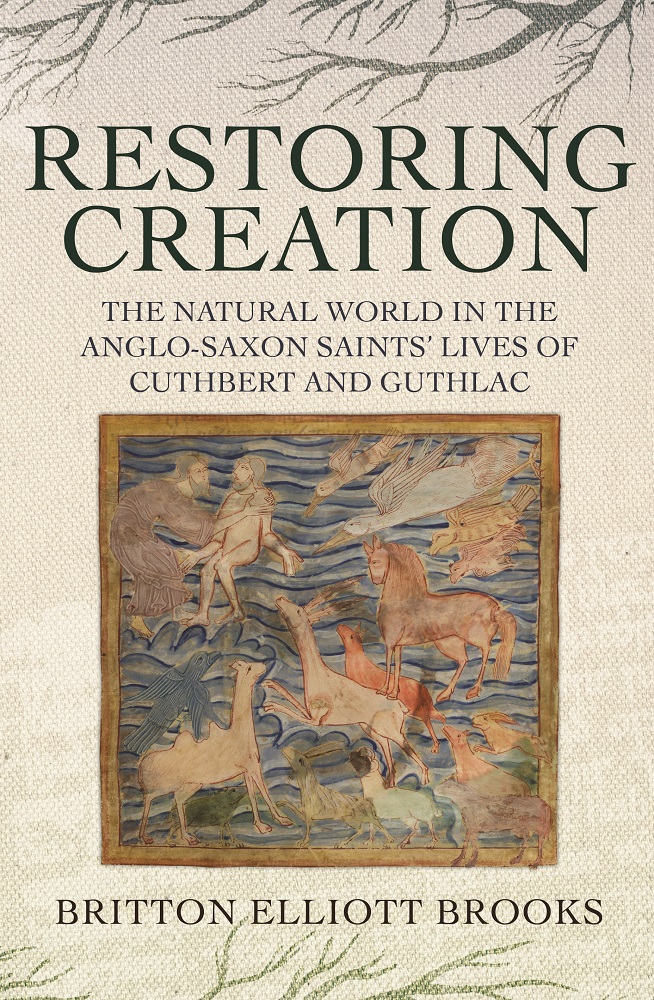
Title
Nature and the Environment in the Middle Ages Restoring Creation: The Natural World in the Anglo-Saxon Saints’ Lives of Cuthbert and Guthlac
Size
323 pages, 23.4x15.6cm, hardback
Language
English
Released
June, 2019
ISBN
9781843845300
Published by
D.S. Brewer
Book Info
Misc.
The book includes Old English, Anglo-Latin
My monograph explores the relationship between the natural world (Creation) and humanity through the early English saints Cuthbert and Guthlac in their Anglo-Latin and Old English Lives. It argues that this relationship is best understood through received theological exegesis concerning Creation’s present state in the fallen world. The exegesis has its foundation in St Augustine’s interpretations of the Genesis narrative, though it enters the textual tradition of the Lives via an adapted portion from Augustine in Bede’s verse Life of St Cuthbert. Both Augustine and Bede argue, with slight differences, the following: that fallen Creation often functions to urge humanity, the saints included, towards greater holiness; that the Fall produced a relational breach between humanity and Creation (whether actual or ontological); and that the effects of the Fall can be temporarily removed by restoring a portion of Creation into its pre-fallen state by means of sanctity. This shared exegetical position creates a place for the saints to work miracles in the natural world, from the sea otters that dry Cuthbert’s feet after a night of prayer in the ocean, to the birds and fish which gather about Guthlac as sheep about their shepherd.
In Chapter 1, I argue that the anonymous Life of St Cuthbert unites Cuthbert’s ability to restore Creation with the theme of monastic obedience, linking the ordering of a monastery to the restoration of Edenic harmony. The anonymous Life also uniquely blurs the line between text and space, as it seeks to create sites for potential lay pilgrimage in the landscapes of Farne and Lindisfarne by highlighting the present efficacy of Cuthbert’s miracles. In Chapter 2, I argue that Bede’s metrical Life of St Cuthbert not only reveals his early attempt to fashion Cuthbert into the primary saint for Britain, via a focus on Cuthbert’s obedience to the Divine Office, but also that the restoration of Creation functions as a tool for monastic rumination. In Chapter 3, I argue that Bede transforms the nature of Cuthbert’s sanctity in his later prose Life of St Cuthbert from static (he is always a saint), to developmental (he progresses in his sanctity), influenced by the Evagrian Life of St Antony, and that Creation is adapted to function as the impetus for, and evidence of, Cuthbert’s progression. In Chapter 4, I argue that Felix’s Life of St Guthlac deliberately connects Guthlac’s spiritual development to a vividly described natural world, and that the restoration of Creation is elevated to an even greater degree here than in Bede’s Lives. In Chapter 5, I argue that the author of the Old English Prose Guthlac grounds his Life by utilizing a landscape lexis shared with contemporary boundary clauses (descriptions of the boundaries of land-units in medieval charters) so that here the relationship between the saint and the created world has greater force. It further argues that Guthlac A uniquely connects Guthlac with the doctrine of replacement, consolidating links between his arrival to the eremitic space and the restoration of pre-fallen Eden.
The end result is a re-centering of the role of the physical world in early medieval literature, which lays the groundwork for a more nuanced engagement with pre-modern notions of the non-human world.
(Written by Britton Brooks, Project Assistant Professor, Graduate School of Arts and Sciences / 2019)
Table of Contents
2. Ruminative Poetry and the Divine Office: Bede’s Metrical Vita Sancti Cuthberti.
3. Bede’ Exegesis and Developmental Sanctity: The Prose Vita Sancti Cuthberti.
4. Enargaeic Landscapes and Spiritual Progression: Felix’s Vita Sancti Guthlaci.
5. Landscape Lexis and Creation Restored: The Old English Prose Life of Guthlac and Guthlac A.
Conclusion: Afterlives of Cuthbert and Guthlac.



 Find a book
Find a book

